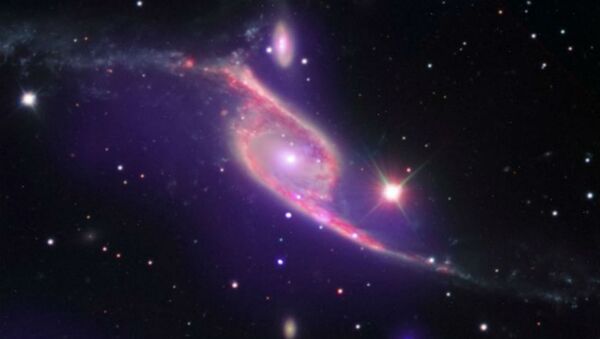It sounds like something the crew of the USS Enterprise might stumble upon in an episode of “Star Trek,” but a “cosmic string” might be more than just science fiction, according to researchers at the University of California, Berkeley. While we can’t see them now, computer models of the elusive, one-dimensional objects suggest they may actually be detectable.
That’s good, since the researchers believe cosmic strings hold the key to answering an enduring puzzle of the universe: why wasn’t it destroyed in the Big Bang?
Physicists generally agree that, at the moment of the Big Bang, most of the matter and antimatter that existed obliterated each other, but that obviously can’t be true, since the universe clearly does exist.
"If you just start off with an equal component of matter and antimatter, you would just end up with having nothing," said lead study author Jeff Dror, a postdoctoral researcher at the University of California, Berkeley, and physics researcher at Lawrence Berkeley National Laboratory, according to Space.com. "Everything would just annihilate."
The key, according to Dror, is, the mysterious elementary particle called the neutrino, which lacks electrical charge and can be either matter or antimatter. In the moments after the Big Bang unleashed the universe to expand, it began to cool very rapidly, and as it did so, scientists believe it underwent a phase change in the same way that a solid ice cube melts into liquid water. This phase change, Dror believes, caused some neutrinos to flip from being antimatter to being matter, meaning that by the time all the antimatter had collided with matter and mutually annihilated, there was still some matter left over.
As the universe cooled and changed phase, it did so unevenly, creating ripples in space-time called cosmic strings. If Dror’s theory is correct, then we should be able to detect these cosmic strings as they interact with the rest of the universe, creating little gravitational waves.
Looking to gravitational waves to study the early universe is not novel - scientists have been looking at very big waves caused by supernovae and black holes for some time - but the waves created by cosmic strings are very tiny, so tiny we cannot yet detect them.
That’s where Dror’s research comes into play: according to computer models his team has created, they believe that if these cosmic strings exist, future observatories should be able to detect them.
"If these strings are produced at sufficiently high energy scales, they will indeed produce gravitational waves that can be detected by planned observatories," Tanmay Vachaspati, a theoretical physicist at Arizona State University who wasn't part of the study, told Live Science last month.
Looks like physicists had better put on those thinking caps and invent such a device!



